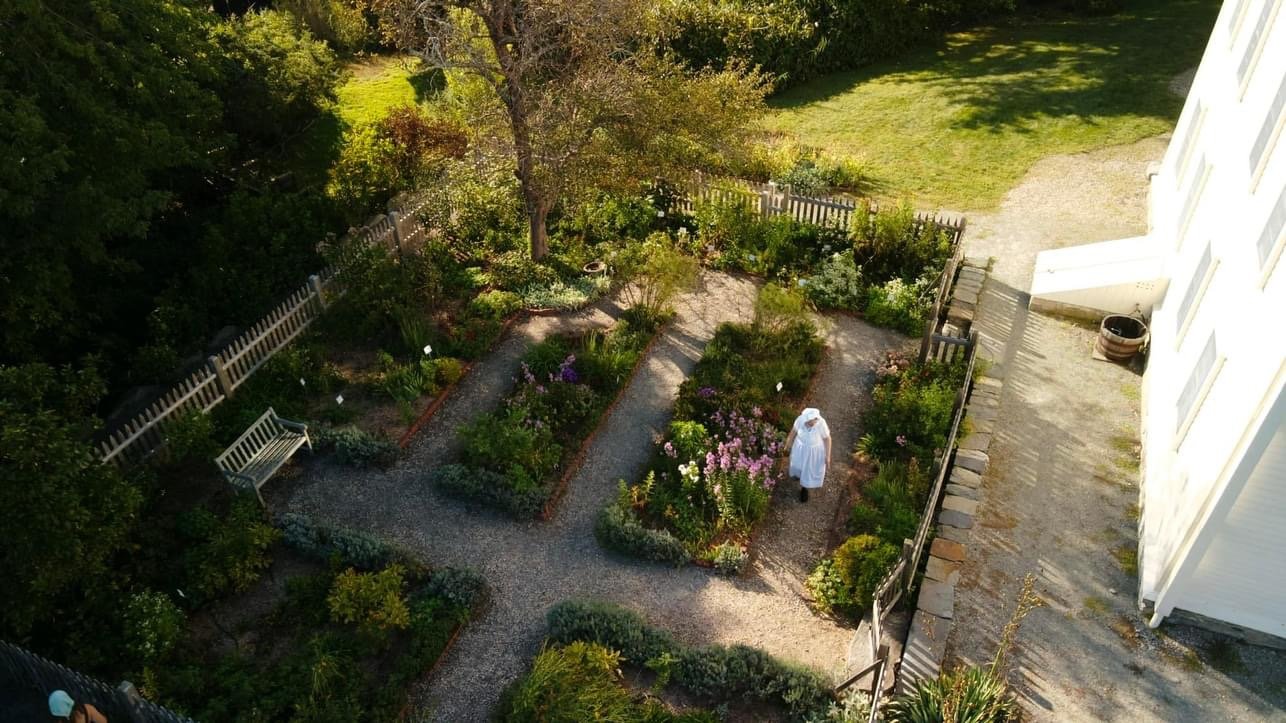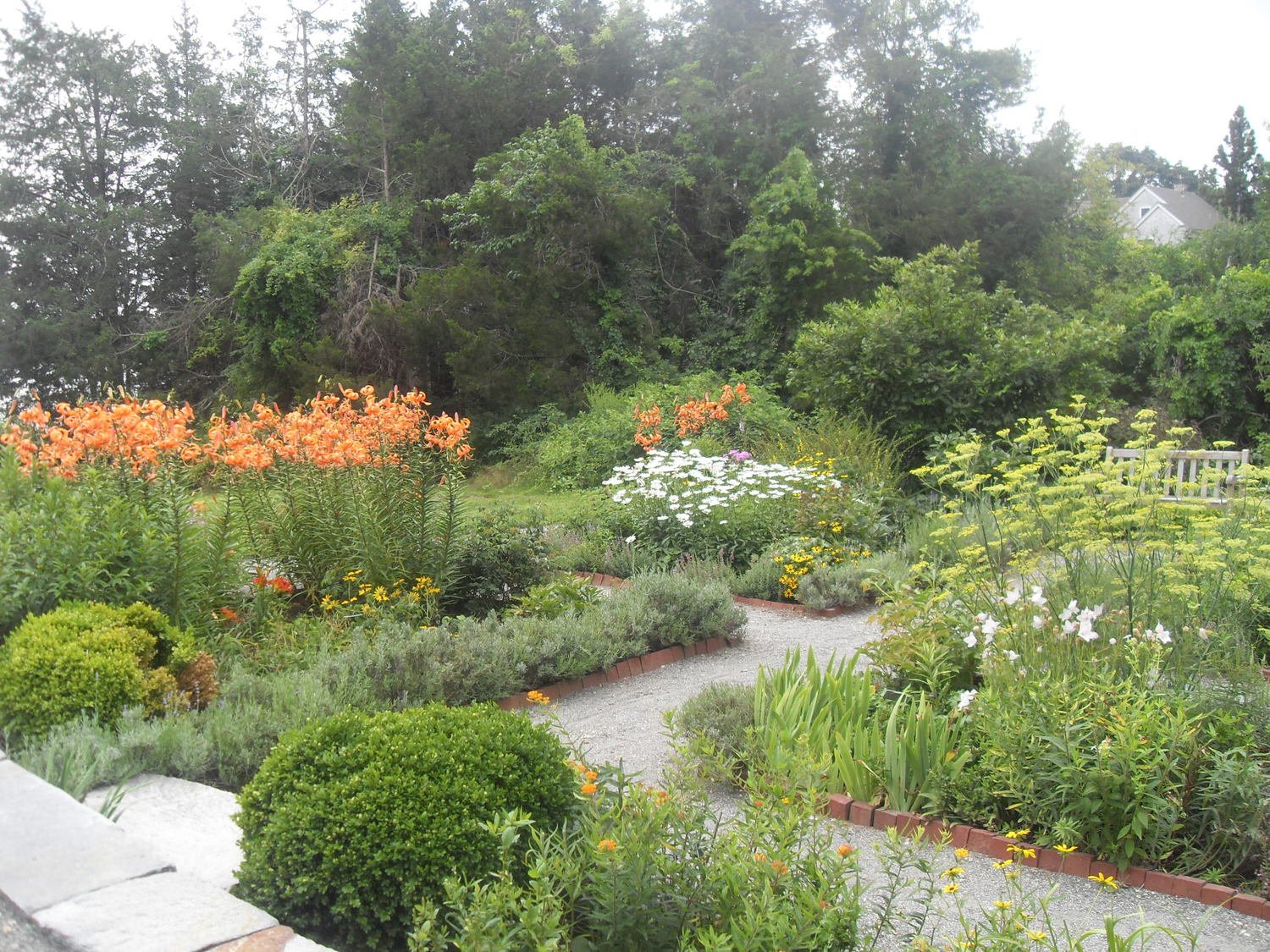The 18th Century Garden
Lift the latch, step into the garden. Let the brilliant colors, contrasting textures, and sweet fragrances carry you back to the eighteenth century world of the Updike family. Imagine yourself an honored guest in their charming garden, a tranquil retreat on one of the largest and most prosperous of the Narragansett plantations. The garden at Smith's Castle today is not a restoration of the original garden believed to have existed on the site in the eighteenth century. Rather, it is a garden conceived in the spirit of that period.
The mid-eighteenth century was a time of prosperity, and Cocumscussoc is said to have been a popular meeting place for intellectual, political, and social leaders. The Updike family's connections with Holland and New Amsterdam were close, and, as horticulture played an important role in eighteenth century life, it is reasonable to suppose that trade included the seeds, bulbs, and plants that were so highly prized at the time.
When the garden was planned over 50 years ago, the traditions of the Updike era at Cocumscussoc were consulted: "the house itself never formed any boundary wall of the garden which lay out a little way to catch the sun. A clear space was left all around for passing. At times, to get a level situation or a southern exposure, a garden would be laid out at the side of the house instead of the back." It was decided that the garden should be placed at the side of the house along an existing path.
The entrance walk, the main cross path toward the bay, and side paths were all surfaced with gravel, edged with brick, and lined with border plants such as lavender and germander. Although paths in gardens of the South were commonly paved with brick, New England garden paths were of gravel or grass.
In Updike days an enclosure was a necessary protection against cattle and sheep: "for walls there was earth, planted with such shrubs as were found locally; and stone, where stone was plentiful; as bricks were being made in most of the colonies, bricks also were used; and, of course, wooden fences of many kinds." A simple picket fence was selected for the Castle garden. It was modeled on an ancient fence that surrounded the dooryard garden of a neighboring house.
Shrubs, flowers, and herbs all grew happily together in colonial days. Plants were important not only for their beauty but also for their domestic, cosmetic, and medicinal uses. Roses yielded their petals for rosewater splash and potpourri and their hips for candies, jellies, and syrups. Lavender was a "comfort for the braines," a good strewing herb for the floor, and its sachets provided insect protection for house linens. Stachys (lamb's ear) made a fine bandage to stop bleeding, and Monarda (bee balm) was the basis for tea, perfume, and potpourri.
The present garden was begun in the fall of 1953 after the South County Garden Club received the coveted Founder's Fund Award of the Garden Clubs of America. It allowed them to implement the plan that club member and landscape architect, Irmgard Graham, had proposed for the garden. Sadly, in 1954 Hurricane Carol swept ashore, bathing the garden in salt water, sweeping away most of the newly-set fence, and leaving three boats and other storm rubbish in her wake. By the spring of 1955 the garden had been planted anew and all was tidy again.
The garden has evolved over the years. Despite human efforts, nature wields the strongest hand in all garden ventures. Plants thrive and die, and creatures of both fur and feather play their part in surprise relocations and disappearances. Plant varieties common in the eighteenth century are often rare or unavailable today. This requires in some cases similar varieties, but different from the originals, must be substituted. Most recently, the URI Master Gardeners have taken the garden under their wing and are their dedication and hard work has helped to maintain this gem true to the spirit of the eighteenth century. Their knowledge and expertise has been and continues to be greatly appreciated.




